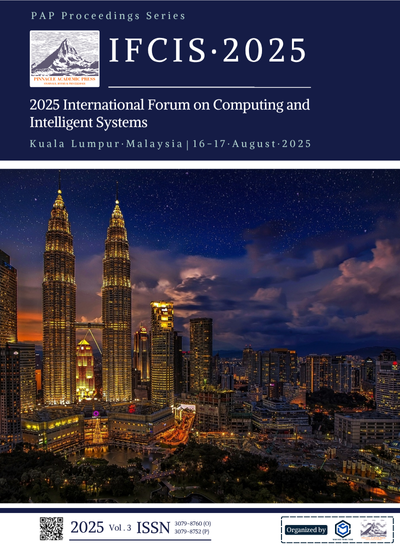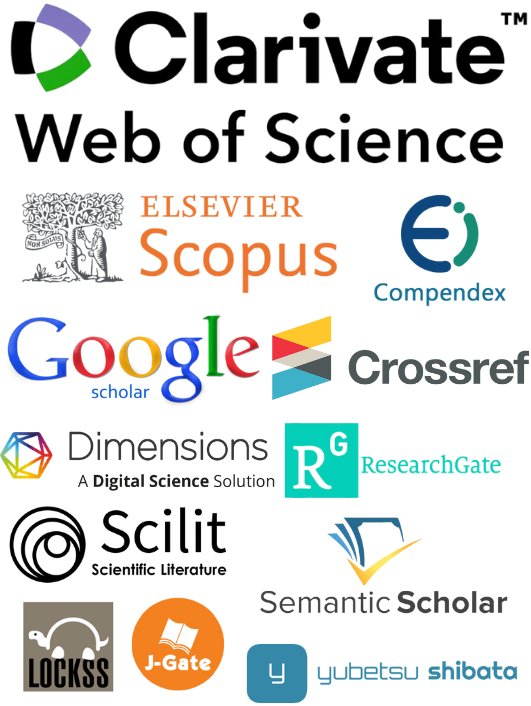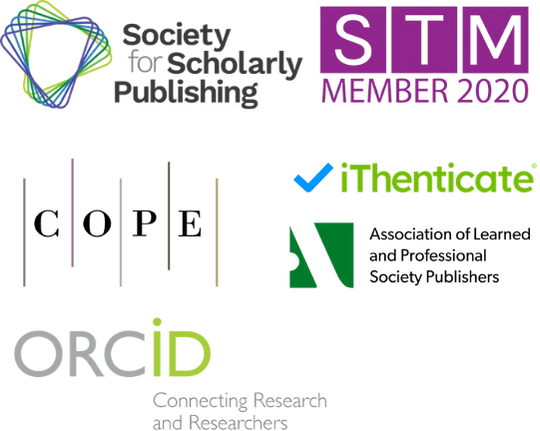Contrastive Time-Series Visualization Techniques for Enhancing AI Model Interpretability in Financial Risk Assessment
Keywords:
time series visualization, financial risk assessment, model interpretability, contrastive visual analyticsAbstract
This paper presents a comprehensive framework for enhancing AI model interpretability in financial risk assessment through contrastive time series visualization techniques. Financial institutions increasingly deploy complex AI models for risk assessment, yet these models often function as "black boxes", creating significant interpretability challenges for analysts and regulatory compliance issues. We propose a novel approach that combines information theory-based visualization methods with interactive contrastive visual analytics to reveal critical temporal patterns driving model decisions. Our methodology integrates visual perception principles, entropy-based temporal importance weighting, and dimensionality reduction techniques optimized for financial time series data. The framework supports visual comparisons between normal and anomalous patterns, highlighting differences in feature attribution and decision boundaries across diverse risk scenarios. Empirical evaluation across multiple financial use cases demonstrates substantial improvements in analyst decision time (42.2%), inter-analyst agreement (24.4%), and anomaly detection rates (34.8%). The proposed implementation addresses computational efficiency challenges posed by large-scale financial datasets and ensures sub-100ms response times for interactive exploration through optimized data indexing and precomputation strategies. The approach bridges the gap between statistical model outputs and domain-specific financial knowledge, providing both global explanations of model behavior and contextual interpretations of specific predictions.
References
1. J. K. Dhaliwal et al., "A data discovery and visualization tool for visual analytics of time series in digital agriculture," in Proc. 27th Int. Conf. Information Visualisation (IV), 2023, doi: 10.1109/IV60283.2023.00053.
2. J. Huo, "Anomaly time series detection and prediction for Internet of Things (IoT) based on Redis visualization and alert," in Proc. Int. Conf. Industrial IIoT, Big Data and Supply Chain (IIoTBDSC), 2023, doi: 10.1109/IIoTBDSC60298.2023.00027.
3. H. Chen et al., "LIVE-ITS: LSH-based interactive visualization explorer for large-scale incomplete time series," in Proc. IEEE Int. Conf. Big Data (BigData), 2024, doi: 10.1109/BigData62323.2024.10825096.
4. J. Feng et al., "Research on visualization processing of military time series data," in Proc. IEEE 7th Int. Conf. Computer and Communication Engineering Technology (CCET), 2024, doi: 10.1109/CCET62233.2024.10837959.
5. X. Huang, "Time-series analysis model based on data visualization and entropy weight method," in Proc. IEEE 4th Int. Conf. Automation, Electronics and Electrical Engineering (AUTEEE), 2021, doi: 10.1109/AUTEEE52864.2021.9668786.
6. S. Xia et al., "A deep learning-based model for P2P microloan default risk prediction," Spectrum of Res., vol. 4, no. 2, 2024.
7. Y. Xu et al., "Privacy by design in machine learning data collection: An experiment on enhancing user experience," Appl. Comput. Eng., vol. 97, pp. 64–68, 2024, doi: 10.54254/2755-2721/97/20241388.
8. X. Xu et al., "Enhancing user intent for recommendation systems via large language models," arXiv preprint, arXiv:2501.10871, 2025.
9. P. Wang et al., "Web-lego: Trading content strictness for faster webpages," in Proc. IEEE INFOCOM, 2021, pp. xxx-xxx, doi: 10.1109/INFOCOM42981.2021.9488904.
10. C. Ni et al., "Enabling intelligent decision making and optimization in enterprises through data pipelines," World J. Innov. Manage. Technol., vol. 7, no. 2, 2024, doi: 10.53469/wjimt.2024.07(02).13.
11. C. Zhang et al., "Enhanced user interaction in operating systems through machine learning language models," in Proc. Int. Conf. Image, Signal Processing, and Pattern Recognition (ISPP), vol. 13180, SPIE, 2024, doi: 10.1117/12.3033610.
12. R. Vinayakumar et al., "Deep learning approach for intelligent intrusion detection system," IEEE Access, vol. 7, pp. 41525–41550, 2019, doi: 10.1109/ACCESS.2019.2895334.
13. W. Lu et al., "Machine learning-based automatic fault diagnosis method for operating systems," 2024, doi: 10.53469/wjimt.2024.07(02).12.
14. E. Goceri, "Challenges and recent solutions for image segmentation in the era of deep learning," in Proc. 9th Int. Conf. Image Processing Theory, Tools and Applications (IPTA), 2019, doi: 10.1109/IPTA.2019.8936087.
15. J. Wu et al., "Data pipeline training: Integrating AutoML to optimize the data flow of machine learning models," in Proc. 7th Int. Conf. Advanced Algorithms and Control Engineering (ICAACE), 2024, doi: 10.1109/ICAACE61206.2024.10549260.
16. J. Wu et al., "Case study of next-generation artificial intelligence in medical image diagnosis based on cloud computing," J. Theory Pract. Eng. Sci., vol. 4, no. 2, pp. 66–73, 2024.
17. W. Bi, T. K. Trinh, and S. Fan, "Machine learning-based pattern recognition for anti-money laundering in banking systems," J. Adv. Comput. Syst., vol. 4, no. 11, pp. 30–41, 2024, doi: 10.69987/JACS.2024.41103.
18. X. Ma and S. Fan, "Research on cross-national customer churn prediction model for biopharmaceutical products based on LSTM-attention mechanism," Academia Nexus J., vol. 3, no. 3, 2024.
19. X. Ni et al., "A hierarchical Bayesian market mix model with causal inference for personalized marketing optimization," J. Artif. Intell. Gen. Sci. (JAIGS), vol. 6, no. 1, pp. 378–396, 2024.
20. S. Wang et al., "Automated test case generation for chip verification using deep reinforcement learning," J. Knowl. Learn. Sci. Technol., vol. 4, no. 1, pp. 1–12, 2025, doi: 10.60087/jklst.v4.n1.001.
21. G. Rao et al., "A hybrid LSTM-KNN framework for detecting market microstructure anomalies: Evidence from high-frequency jump behaviors in credit default swap markets," J. Knowl. Learn. Sci. Technol., vol. 3, no. 4, pp. 361–371, 2024, doi: 10.60087/jklst.v3.n4.p361.
22. D. Ma, "Standardization of community-based elderly care service quality: A multi-dimensional assessment model in South-ern California," J. Adv. Comput. Syst., vol. 4, no. 12, pp. 15–27, 2024, doi: 10.69987/JACS.2024.41202.
23. D. Ma, W. Zheng, and T. Lu, "Machine learning-based predictive model for service quality assessment and policy optimi-zation in adult day health care centers," Spectrum of Res., vol. 4, no. 1, 2024.
24. B. Wu et al., "Enterprise digital intelligent remote control system based on industrial Internet of Things," 2024, doi: 10.53469/wjimt.2024.07(02).09.
25. C. Fan et al., "Integrating artificial intelligence with SLAM technology for robotic navigation and localization in unknown environments," Appl. Comput. Eng., vol. 77, pp. 245–250, 2024, doi: 10.54254/2755-2721/77/2024MA0056.
26. X. Ma et al., "An enhanced LSTM-based sales forecasting model for functional beverages in cross-cultural markets," Appl. Comput. Eng., vol. 118, pp. 55–63, 2025.
27. J. Fan, Y. Zhu, and Y. Zhang, "Machine learning-based detection of tax anomalies in cross-border e-commerce transactions," Academia Nexus J., vol. 3, no. 3, 2024.
28. G. Rao et al., "Jump prediction in systemically important financial institutions' CDS prices," Spectrum of Res., vol. 4, no. 2, 2024.
Downloads
Published
Issue
Section
License
Copyright (c) 2025 Chunhe Ni, Kun Qian, Jiang Wu, Hongbo Wang (Author)

This work is licensed under a Creative Commons Attribution 4.0 International License.



